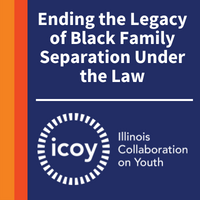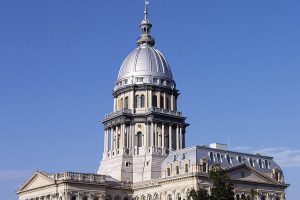ABA Resolution 606: The Original Story of Racism in the Child Welfare System
Publisher: Sarah Daniels

Late last year, ICOY was made aware of the American Bar Association: Racism in Child Welfare video that underscored the 606 resolution and background on why it was important to adopt it. Since learning of the video, we have not only passed it along to many of our shared coalition spaces, but we also created space for our staff by hosting watch sessions and post-discussion/reflections.
In light of Black History Month, we thought it fitting to provide context on what we envision child and family well-being to look like when this resolution is considered in all areas of the child welfare system, especially the legal parts. Throughout the video, the following areas were covered:
- Why was the resolution passed?
- Why did the ABA focus on the historical roots?
- The obstacles that were faced during the process.
- What can be done with the resolution?
The ABA Resolution 606, adopted in 2022, urges all federal state, local, territorial and tribal Bar associations to educate attorneys, judges, and other legal professionals about anti-slavery in the US. It also calls for these professionals to learn about anti-black systemic racism within the child welfare system stemming from the history of slavery and perpetuated by over-surveillance of and under investment in Black families in America.
The purpose of the focus on historical roots speaks to the understanding that we can’t truly reconcile where we are going without acknowledging where we are coming from. A quote that was referenced in the presentation was “We learn from history that we don’t learn from history!” A great example that provided context to this quote is how we define oversurveillance and underinvestment. There are many historical laws that played a role in facilitating black family separation through these two themes. Deriving from slavery where violent acts of forces pregnancy and taking children from their families and served enslavers’ economic interest posed a threat of family separation furthers compliance. In addition, these acts of slavery being legal for 250 years and illegal for 158 years are indicative that there is overlap and ongoing facilitation systemically to this day.
More specifically, some laws that were outlined to show the facilitation of underinvestment in black families are during the Depression when black mothers were excluded from being eligible for mother’s pension, the second new deal in 1935 when the federal government established aid to dependent children where the program included provision for supporting casework services and cash stipends for mother, and reducing funding for SSA from $120M to $25M. The pushback from these unfair laws were at the beginning of the Civil Right movement during the early 1950s and late 1940s in hopes to gain greater access and accessibility to support. For example, cases like the Brown v Board of Education of Topeka (1954) which was an effort to form the modern design of integrated and desegregated schools, but suitability laws contributed to the push of black families out of the communities to limit school enrollment.
The role of the Judiciary system in 1962 pushed for oversight to “ensure that rogue caseworkers would not remove children from their homes to simply punish poor mothers for applying for public benefits in the first place.” It was a struggle for children and parents to have adequate counsel to challenge the decisions after court review judges already had their minds made up to pursue removal so much that state reimbursements for maintenance were permitted after a child was removed from their parents/relative.
It is safe to say that while we have made progress in the child welfare system, we are still not where we should be or need to be as we continue to have to make the case that poverty is not neglect, and we reiterate the necessary investment in economic supports to reduce the need for foster care. Resolution 606 calls on all legal professionals to consult, listen to and be led by those with lived experiences in child welfare to help us end the legacy of black family separation under the law. As a policy and advocacy organization, we urge you, as providers to lean into learning the history, use this information to transform the work on behalf of direct service providers interacting with the legal system, and help judges mitigate the harms from the operation of bias and discrimination that is blatantly inherent in the legal and practice framework.
Credits and Points of reference to the ABA Commission:
Brenda C Robinson, Attorney, Children’s Law Center of California, ABA Commission on Youth at Risk
Lakeshia Adeniyi-Dorsey, Attorney, APC, ABA Commision on Youth at Risk
Prudence Beidler Carr, Canter Director, ABA Center on Children and the Law






